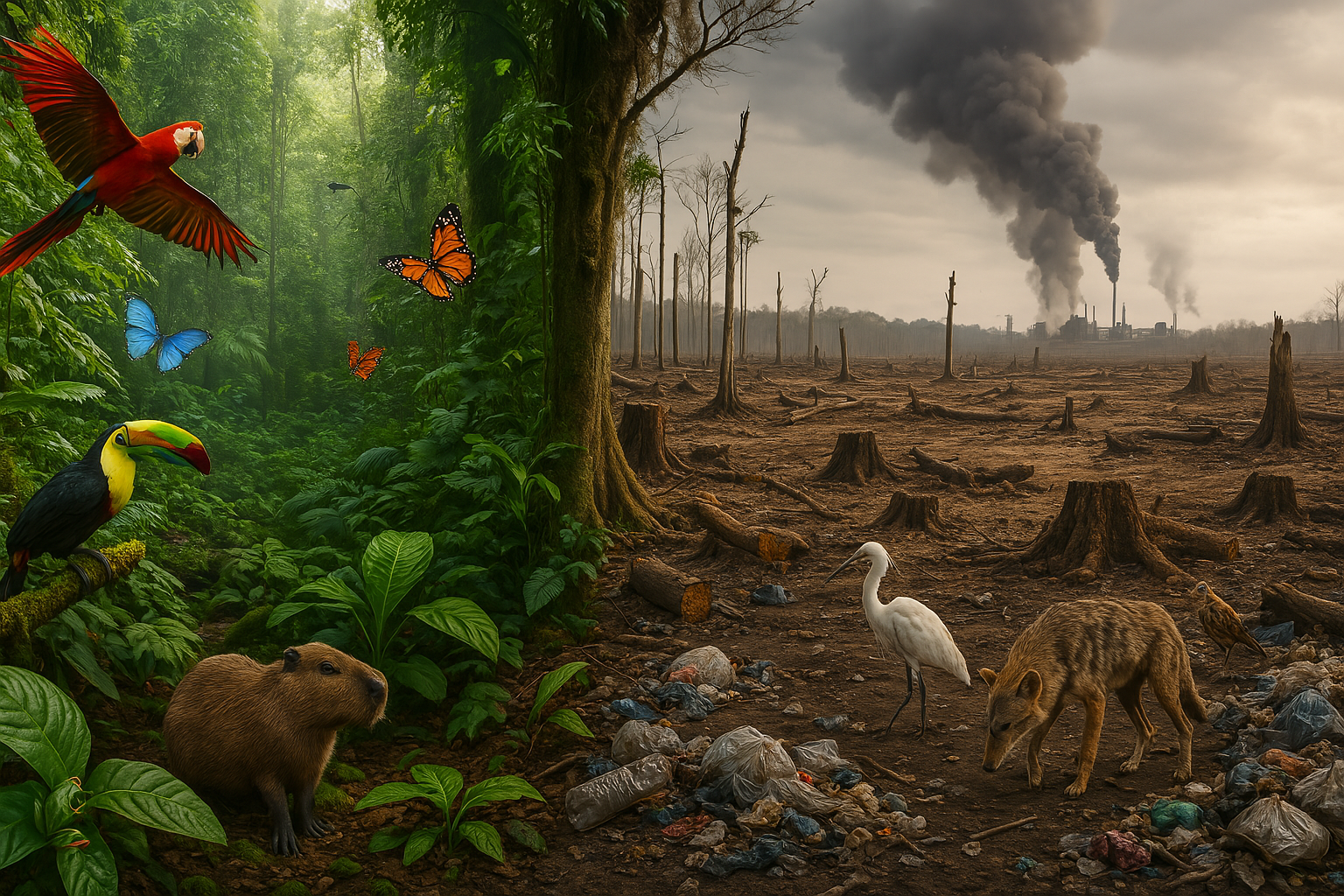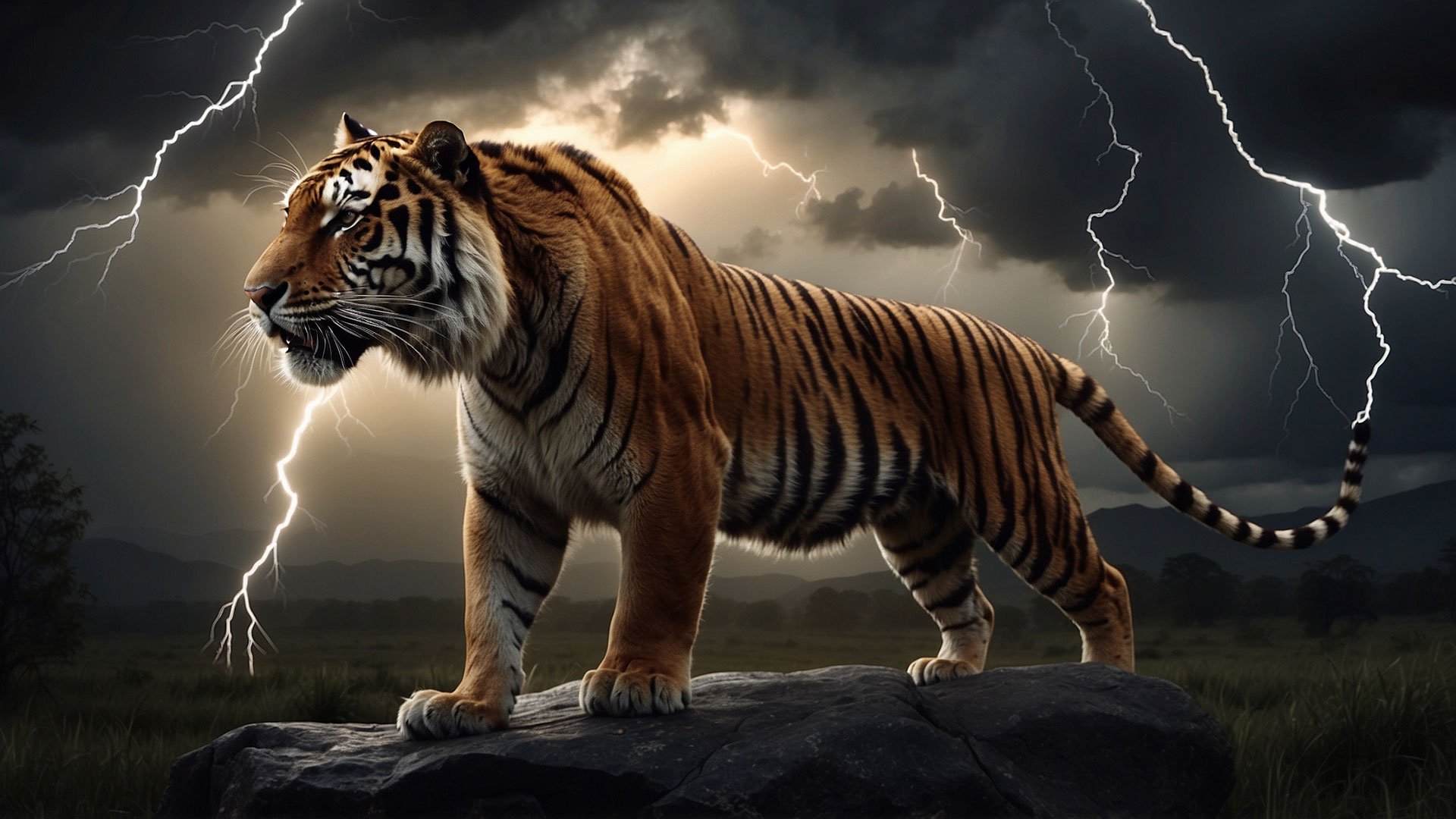The Human Fingerprint on Every Ecosystem: A Call to Action for Biodiversity
Humans Destroying the Planet
In a sweeping new analysis that leaves no room for doubt, researchers have confirmed what many feared—humans are driving biodiversity loss across all species and ecosystems on Earth. A groundbreaking synthesis of over 2,000 global studies, covering nearly 100,000 sites worldwide, has uncovered the undeniable impact of human activity on terrestrial, freshwater, and marine environments alike.
A Crisis Across All Life Forms
The study, led by the Swiss Federal Institute of Aquatic Science and Technology (Eawag) and the University of Zurich, paints a grim picture. Species diversity is declining at an alarming rate, with nearly 20% fewer species found in human-impacted sites compared to untouched areas. Even more disturbing, mammals, reptiles, and amphibians—already vulnerable due to smaller populations—are experiencing particularly severe losses.
The Five Deadly Drivers
Researchers identified five primary drivers behind this biodiversity crisis:
Habitat Change – Urbanization, deforestation, and agricultural expansion are destroying critical habitats.
Direct Exploitation – Overhunting, fishing, and resource extraction are decimating species populations.
Climate Change – Altered weather patterns and rising temperatures disrupt ecosystems.
Invasive Species – Introduced species outcompete native ones, leading to extinctions.
Pollution – Pesticides, fertilizers, and industrial waste poison ecosystems, driving species loss.
Agriculture: A Silent Killer
Intensive agriculture, especially arable farming, has proven particularly destructive. The widespread use of pesticides and fertilizers not only reduces biodiversity but alters species composition, fundamentally changing ecosystems. Pollution from these practices often causes low oxygen levels in bodies of water, leading to massive fish die-offs, as seen along the Gulf of Mexico coastline.
Homogenizing Nature
Humans are not just reducing species numbers; they are altering which species thrive. This “homogenization” of biodiversity means that ecosystems once rich in specialized species are now dominated by a smaller number of generalists. In mountainous regions, high-altitude plants are being pushed out by lower-altitude species, leaving no refuge for those adapted to these cooler, specialized environments.
Hope on the Horizon: A Path Forward
Despite these sobering findings, hope is not lost. The path to reversing biodiversity loss lies in policy changes, sustainable agriculture, habitat protection, and global cooperation. By supporting conservation efforts like those funded by Big Cat Rescue, we can help protect fragile ecosystems and save species teetering on the brink of extinction.
Every Action Counts. Whether it’s supporting responsible land management, choosing sustainable products, or advocating for stronger environmental policies, each step brings us closer to bending the curve of biodiversity loss.
Read more: https://www.theguardian.com/environment/2025/mar/26/human-link-biodiversity-loss-species-ecosystems-climate-pollution-eawag-study-nature-aoe



